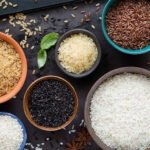Licorice Root: Benefits, Uses, Side Effects, and More
- What is Licorice Root?
- Traditional Uses of Licorice Root
- Evidence-Based Uses of Licorice Root
- Dosage and Safety
- Side Effects
- Drug Interactions
- Conclusion
- References
What is Licorice Root?
Licorice (also spelled liquorice), scientifically known as Glycyrrhiza glabra, is a legume native to Southern Europe and parts of Asia. It’s also commonly called sweet wood, mulethi, or aslussoos. The name “licorice” is derived from the Greek word meaning “sweet root.” The characteristic flavor of licorice comes primarily from anethole, an aromatic compound also found in anise and fennel. However, much of its sweetness is attributed to glycyrrhizin, a compound that is 30 to 50 times sweeter than table sugar and possesses various pharmaceutical properties.

The root of the licorice plant is used in various forms for medicinal purposes across different alternative medicine systems. The primary active principles include:
- Glycyrrhizin (glycyrrhizic acid) and related compounds: These are responsible for the sweet taste and many of the medicinal effects.
- Phytoestrogens (Isoflavones), mainly Glabridin: These compounds have estrogen-like effects.
Traditional Uses of Licorice Root
Traditionally, licorice root has been used to treat a wide range of ailments, including:
- Respiratory Diseases: Bronchitis, bronchial asthma, laryngitis, pharyngitis, and pulmonary tuberculosis.
- Urinary Tract Issues: Urinary tract infections and dysmenorrhea (painful menstruation).
- Gastrointestinal Problems: Belching, dyspepsia, flatulence, and both oral and gastrointestinal ulcers.
- Other Conditions: Spleen and liver diseases, neuralgias, skin diseases (eczema, psoriasis, impetigo), and as a de-addiction aid for tobacco users.
Method of Use (Traditional):
- Decoction: 5-7 grams of the root, twice daily.
- Concentrated Extract: 1 gram.
- Chewing the roots: For oral ulcers and upper respiratory tract infections (URTI).
Evidence-Based Uses of Licorice Root
Scientific research has supported some of the traditional uses of licorice root and identified additional potential benefits. Here’s a breakdown of the evidence:
Skin Health
Studies have shown that topical applications of 0.5% glabridin (a component of licorice root) can inhibit UVB-induced pigmentation and erythema (redness) in the skin. Glabridin also exhibits anti-inflammatory effects by inhibiting superoxide anion production and cyclooxygenase activity. Its anti-melanogenesis effect is attributed to the inhibition of tyrosinase activity, an enzyme involved in melanin production (3).
Antibiotic Resistance
Licoricidin, a flavonoid found in licorice, has been shown to decrease antibiotic resistance and restore the effectiveness of oxacillin (a β-lactam antibiotic) against methicillin-resistant Staphylococcus aureus (MRSA) (4).
Cancer Prevention
Research indicates that glycyrrhetinic acid (GA) and related compounds can inhibit liver carcinogenesis and tumor growth (5). Glabridin has also demonstrated effective inhibition of cell metastasis in human non-small cell lung cancer A549 cells by inhibiting migration, invasion, and angiogenesis (6). Further studies suggest potential benefits against breast cancer (9, 12). Interestingly, roasting the root appears to enhance its anti-carcinogenic effects compared to alcohol or aqueous extracts (13).
Weight Management
Licorice root may aid in weight loss and managing dyslipidemia (abnormal lipid levels). It inhibits triglyceride synthesis by inhibiting diacylglycerol acyltransferase (22).
Antiviral Properties
Licorice has shown antiviral activity against Hepatitis B and Hepatitis C. Intravenous licorice extract has been investigated for the treatment of Hepatitis C (14, 16).
Other Benefits
- Hair Tonic: Used topically for hair health.
- Antioxidant: Provides antioxidant benefits (19).
- Anti-inflammatory: Exhibits anti-inflammatory properties (23).
It’s important to note that more research is needed to establish standardized methods and dosages for the treatment of the above conditions.
Dosage and Safety
Safe doses for flavonoid extracts have been reported up to 1200mg once daily (7). However, consuming 20 grams or more of crude licorice daily can cause adverse effects in healthy individuals. For individuals with cardiac or renal disease, even 5 grams or more per day can be problematic (18, 20). It’s crucial to inform your physician if you are taking licorice in any form regularly.
Side Effects
Excessive licorice consumption can mimic the symptoms of excess mineralocorticoid secretion. This is due to glycyrrhizic acid inhibiting 11beta-dehydrogenase activity in the liver and kidneys, leading to increased blood mineralocorticoid levels. Symptoms include:
- Water and sodium retention
- Potassium depletion (hypokalemia)
- Hypertension (high blood pressure)
To mitigate these risks, deglycyrrhizinated licorice (DGL) preparations are available, which have had the glycyrrhizin removed (1, 11).
Pregnancy Considerations: High doses of licorice during pregnancy can inhibit placental 11beta-hydroxysteroid dehydrogenase activity, exposing the fetus to higher levels of glucocorticoids. This can lead to low birth weight and an increased risk of hypertension in adulthood (2).
Tobacco and Chewing Gum: Tobacco products and chewing gums flavored with true licorice can also cause hypokalemia with prolonged use (8, 15).
Drug Interactions
Licorice can interact with several medications (17). It’s essential to be aware of these potential interactions:
- ACE inhibitors
- Diuretics
- Digoxin
- Corticosteroids
- Insulin and some oral hypoglycemic agents (OHAs)
- MAO inhibitors
- Oral contraceptives
- Warfarin
- Medications processed by the liver (e.g., celecoxib, diclofenac, glipizide, ibuprofen, phenytoin, piroxicam, phenobarbital, and secobarbital)
Conclusion
Licorice root offers a range of potential health benefits, from supporting skin health to exhibiting antiviral and anti-cancer properties. However, it’s crucial to use licorice responsibly and be mindful of potential side effects and drug interactions. Consulting with a healthcare professional, especially if you have pre-existing health conditions or are taking medications, is highly recommended.
For personalized advice and to determine if licorice root is appropriate for your individual needs, consider booking a consultation with a registered dietitian or healthcare provider.
References
- http://endo.endojournals.org/content/125/2/1046.short
- http://hyper.ahajournals.org/content/27/6/1200.short
- http://onlinelibrary.wiley.com/doi/10.1111/j.1600-0749.1998.tb00494.x/abstract
- http://www.sciencedirect.com/science/article/pii/S0031942205000336
- http://ar.iiarjournals.org/content/25/6B/4043.short
- http://ict.sagepub.com/content/10/4/341.abstract
- http://www.jacn.org/content/26/3/209.abstract
- http://www.nejm.org/doi/full/10.1056/NEJM198004033021405
- http://cancerres.aacrjournals.org/content/60/20/5704.short
- http://www.springerlink.com/content/f64312147857706g/
- http://content.karger.com/ProdukteDB/produkte.asp?Aktion=ShowAbstractBuch&ArtikelNr=23470&ProduktNr=225979
- http://171.66.122.67/cgi/content/abstract/2005/1/1258-c
- http://171.66.122.67/cgi/content/abstract/2006/1/1126-b
- http://onlinelibrary.wiley.com/doi/10.1002/ptr.2295/abstract
- http://www.bmj.com/content/314/7082/731.extract
- http://nccam.nih.gov/health/licoriceroot
- http://www.umm.edu/altmed/articles/licorice-000262.htm
- http://www.umm.edu/altmed/articles/licorice-000262.htm
- http://www.ncbi.nlm.nih.gov/pubmed/21053390
- http://www.ncbi.nlm.nih.gov/pubmed/17613133
- http://en.wikipedia.org/wiki/Licorice#cite_note-12
- http://www.umm.edu/altmed/articles/licorice-000262.htm
- http://www.ncbi.nlm.nih.gov/pubmed/21785649



